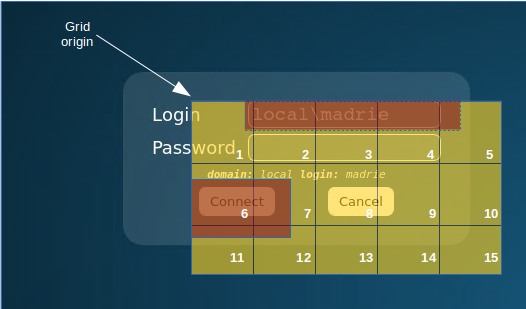Discovering remoteFx
![]() I have recently worked on the remoteFx encoder of FreeRdp. So here's a post to discover remoteFX.
I have recently worked on the remoteFx encoder of FreeRdp. So here's a post to discover remoteFX.
Overview
RemoteFx is a codec for bitmap in RDP. At the beginning of the RDP protocol, many vector operations have been added: draw a rectangle with a solid color, move a region from one place to another, do some complicated bitmap operations... It looks like Microsoft was trying to put in the protocol the operation that were supported by the GDI. That gives very complicated operations, for example I imagine very few people understand the ninegrid operations.
At the end the result was not that good:
- implementing a RDP client becomes very complicated as to have reasonable performance, you need to implement many commands. The legacy clients (lightweight clients) stay with their factory capabilities ;
- the server code becomes complicated too as you have to adapt to the client capabilities. That means many if() in the code and some fall-back for unsupported command ;
- the graphics world has changed and most tool-kit that creates the content to display, just send a big bitmap update, the vector informations are totally lost.
So some researches have been done to optimize the required bandwidth for transmitting bitmaps. Doing so:
- the clients become easier to code as they can support only a few codecs ;
- the decoders / encoders can be hardcoded on a chip for best performances. For example for the h.264, even my smartphone has a h264 encoder / decoder ;
- the server can do some heuristic to compute the best codec to use depending on the screen region ;
- using lossy data compression algorithm allows to optimize the bandwidth.
RemoteFX
I won't cover the details of the remoteFX compression, as I'm far from being an expert on this subject. A very high level overview
is that pixels have their colorspace changed. In this new colorspace, each different component of the colors are separed as streams and the compression operate on these stream. If the colorspace was RGB, it would mean compressing streams of red, green and blue.

In this example, the two red areas are the ones that should be refreshed. It's the login field with the blinking cursor plus the connect button that overlights when you go over it.
The remoteFx codec works with a grid of 64x64 tiles: the yellow grid. In our example, the remoteFx message would contain:
- a surface command with the coordinates of the grid origin ;
- a list of rectangles to update ;
- the content of tiles 1, 2, 3, 4, 5, 6, 7, 11 and 12 matching the rectangles.
Note: some tiles aren't totally covered by the rectangles (in our example it's the case for all tiles). The remoteFx encoder of HyperV fills with green the zones that won't be visible (the remaining yellow areas in the tile). By using the same color for the hidden part, they obtain better compression for the tile. For example for tile 6, there would have some green for "domain:" and the real content for button.
Another detail: with HyperV the grid is always anchored in (0, 0).
The bug I have worked on, is that the actual remoteFx encoder in FreeRdp sends the 15 tiles, instead of just the modified tiles.
Links
Here's a list of materials, I have used to write this post:
- a very interesting post from microsoft's blog ;
- the source code of course (what else ?)
